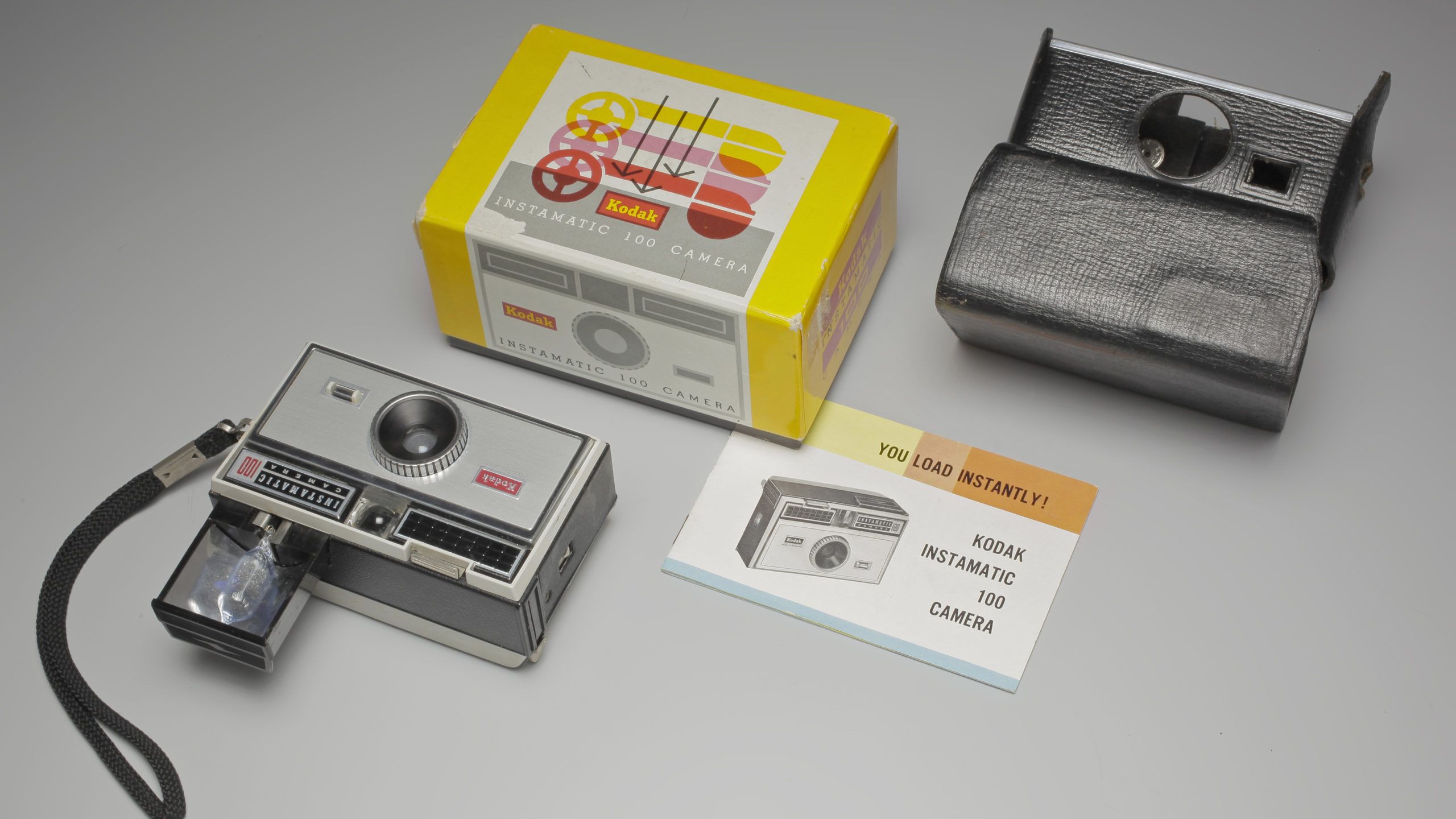Instamatic
Kodak once again launched a hugely successful marketing campaign, when it created the Instamatic series in 1963. With its simplified film-loading system aimed at the general public, the Instamatic range sold around 70 million units, an all-time record.
During the period of prosperity and consumption, which followed the Second World War, cameras became accessible to an ever-wider audience. But the tiresome need to read the instruction manual, and the errors caused by faulty loading of the film in the camera remained obstacles for a number of users. Kodak dealt with the problem by releasing the Instamatic, a camera which was extremely easy to use and was loaded with the Kodapak, 35mm film contained within a plastic cartridge. All you needed to do was slide it into the camera, and it was ready to take pictures. Once the film was exposed, the cartridge itself could be sent to the lab for development. No more fear of failing to load the film properly, which granted the general public ever-greater ease of access to photography.
The Instamatic brought about a huge growth in industrial development labs, which produced enormous amounts of colour prints to meet the demand created by all the new users.
In 1972, almost a decade after the Instamatic film, Kodak introduced another film system, the Pocket Film. It offered the same benefits as the Instamatic system, except that the cassette was much smaller, which enabled the design of an even more compact camera.
While the Instamatic cassette was equipped with a 35mm-wide film, the Pocket cassette was based on a 16mm-wide film, whose negatives at 13x17mm were only a quarter of the size of a small format negative. Film cassettes with the designation of 110 were mostly colour negative films, but also for black and white, and as slide films, with a sensibility in the range of 100 to 400 ISO.
About every decade, a new film system came onto the market, and none was more popular than the small format film – including the Disc-system, which was introduced in the autumn of 1982.
It was the same Kodak engineers, who had already built the Pocket-system, who now set their sights on further developing this miniaturization. In any case, the now only 8×10.5mm-sized negative was not to be produced any more as a roll film, but instead, the 15 small negatives were grouped onto a film disc. The small format had the advantage, that it enabled the development of even more compact cameras. Qualitatively, the Disc-system was not altogether convincing, so that film production had to wait seven years, before it was ready to start.


